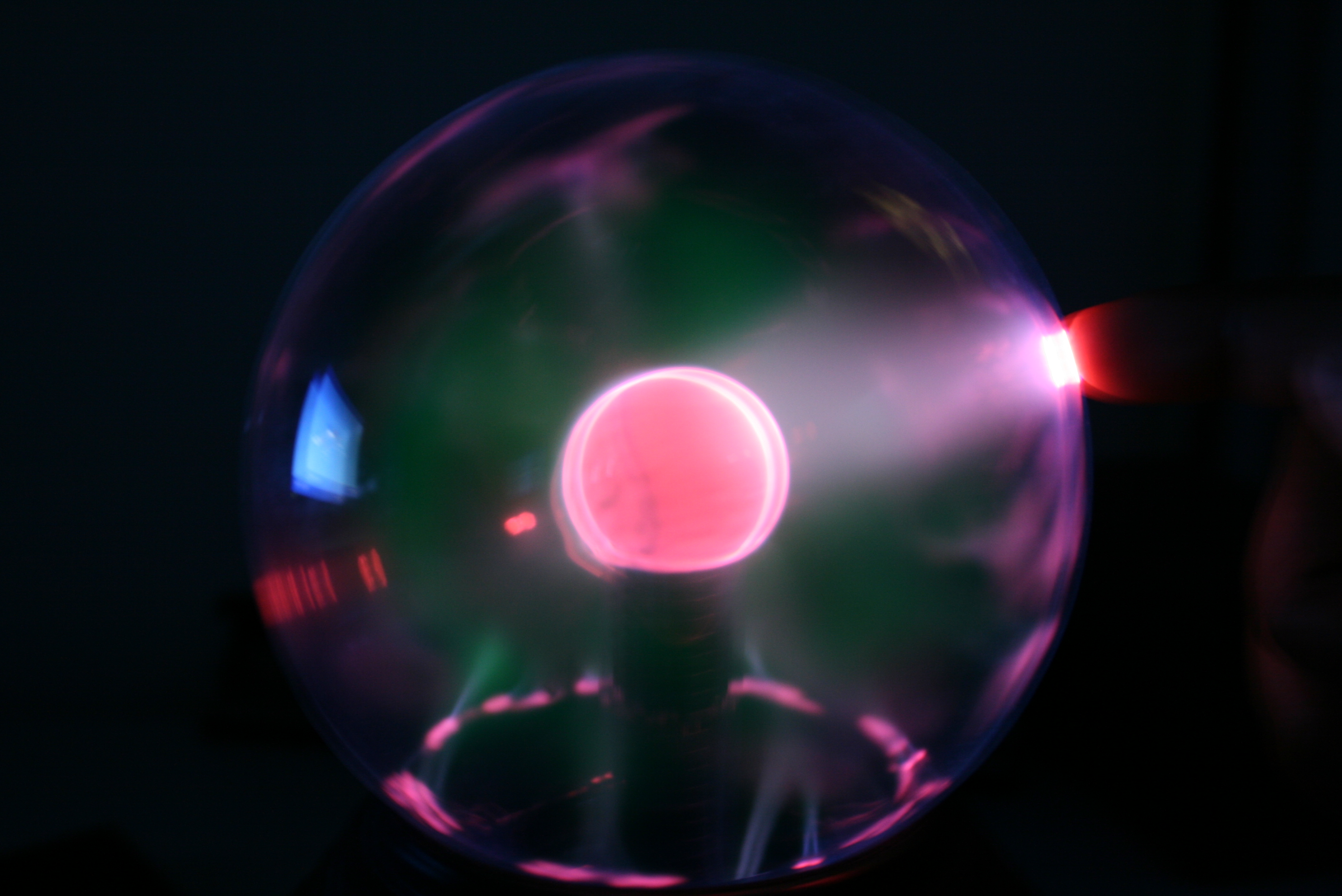INTRODUCTION

| When
a temperature of solid for example imagine ice is increased till it
transform from solid to liquid state (water) that is phase transition
from ice to water. Again increasing the temperature will lead to
phase transition form liquid to gas (steam). Further increase in
temperature, at one stage the bond within the hydrogen and oxygen
breaks and electrons in valance shell no longer bonded to the O2
and H2
rather it becomes free like that of free electrons in metals. Or in
other words at the temperature near or exceeding atomic ionization
energies, atoms decompose into negatively charged and positively
charged ions. These charged particles are by no means free: in fact,
they are strongly affected by each others' electromagnetic fields.
Since the charges are no longer bound, their assemblage becomes
capable of collective motion of great vigor and complexity. This
assemblage is known as a Plasma. |
|

Fig.1.
Shows a plasma lamp, illustrating some of the more complex phenomena
of a plasma, including filamentation. The colors are a result of
relaxation of electrons in excited states to lower energy states
after they have recombined with ions. These processes emit light in a
spectrum characteristic of the gas being excited.
|
|
Plasmas are conductive
assemblies of charged particles, neutrals and fields that exhibit
collective effects. Further, plasmas carry electrical currents and
generate magnetic fields. Plasmas are the most common form of matter,
comprising more than 99% of the visible universe, and permeate the
solar system, interstellar and intergalactic environments. In this
presentation my major interest will be focused on the properties, its
dynamics and applications.
|
|